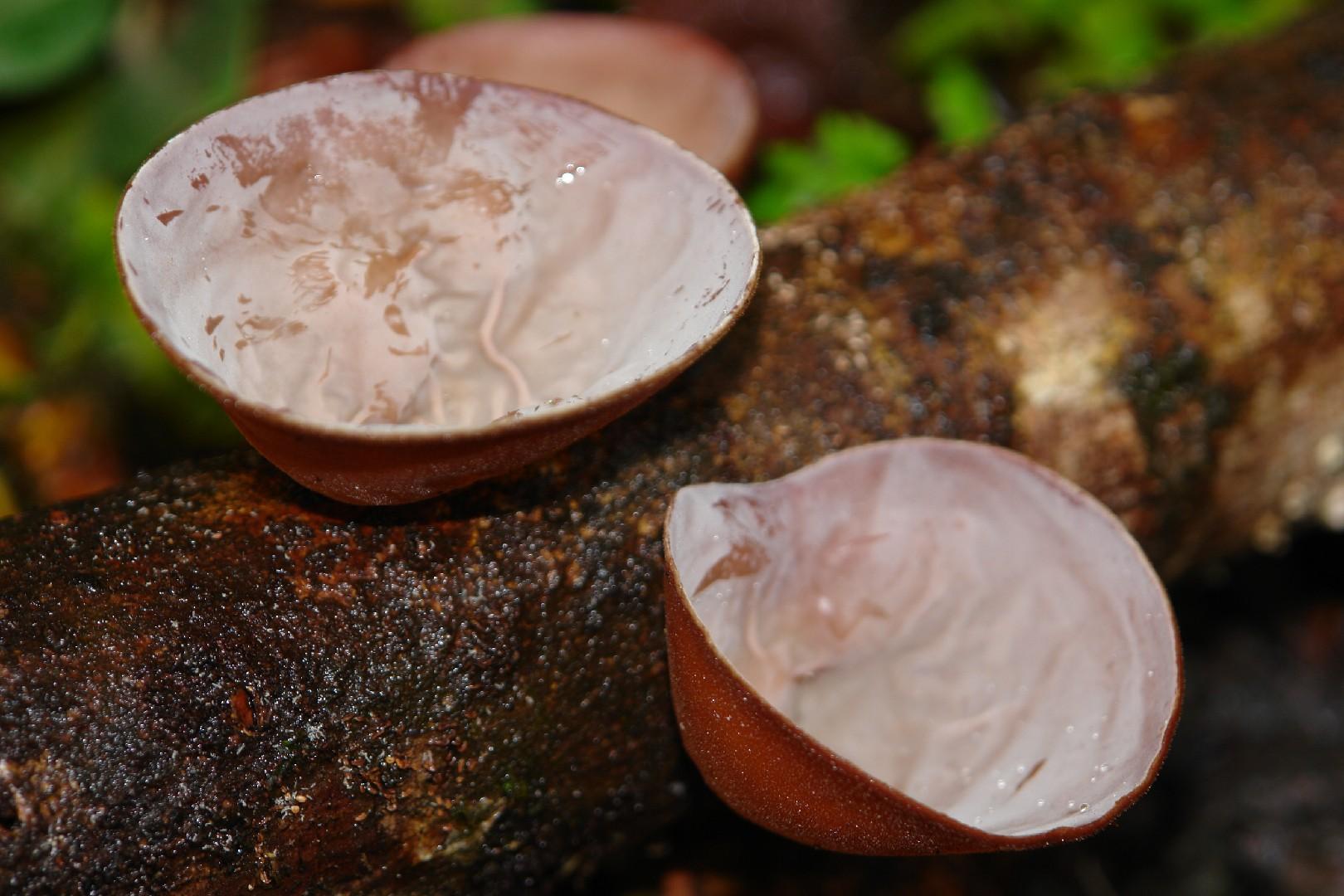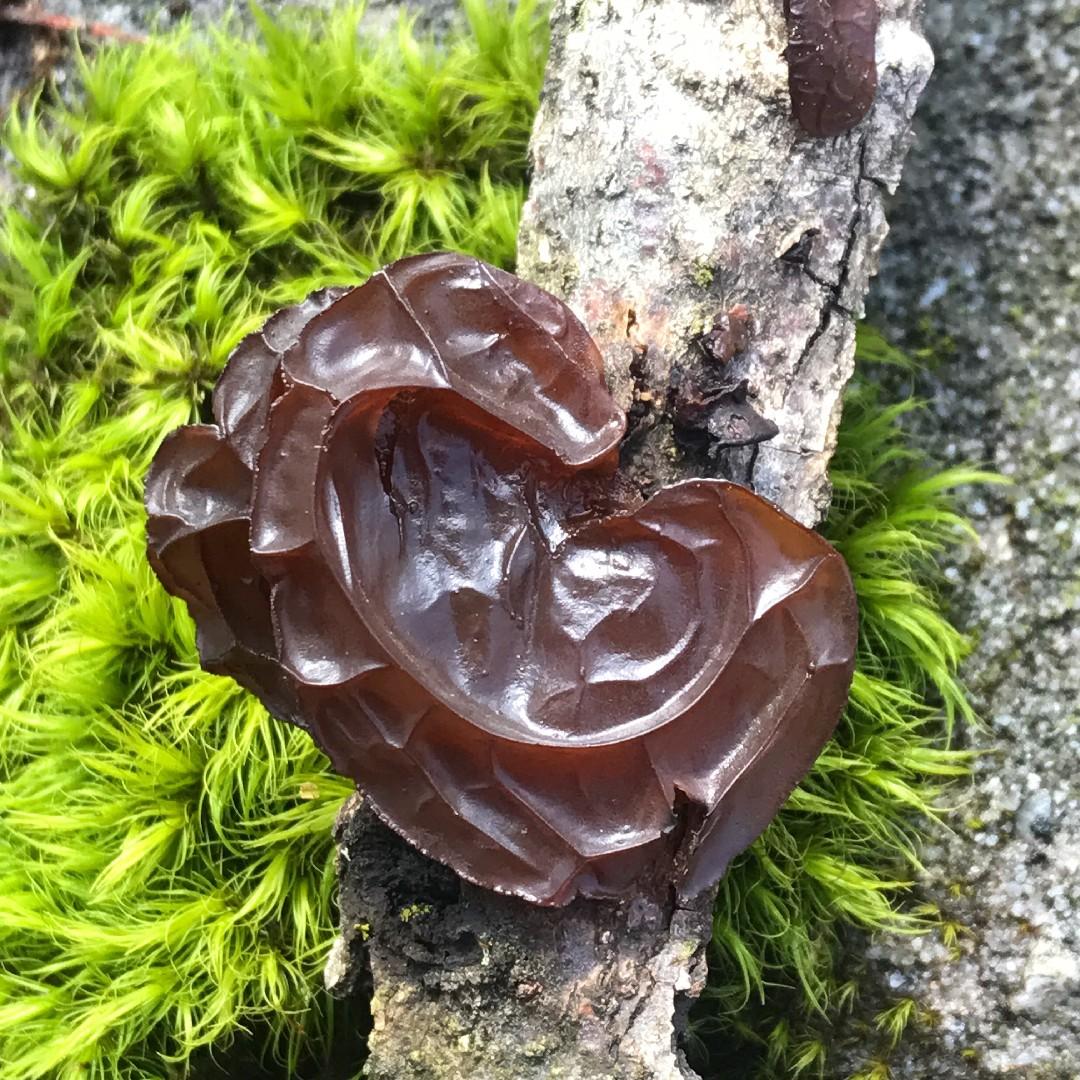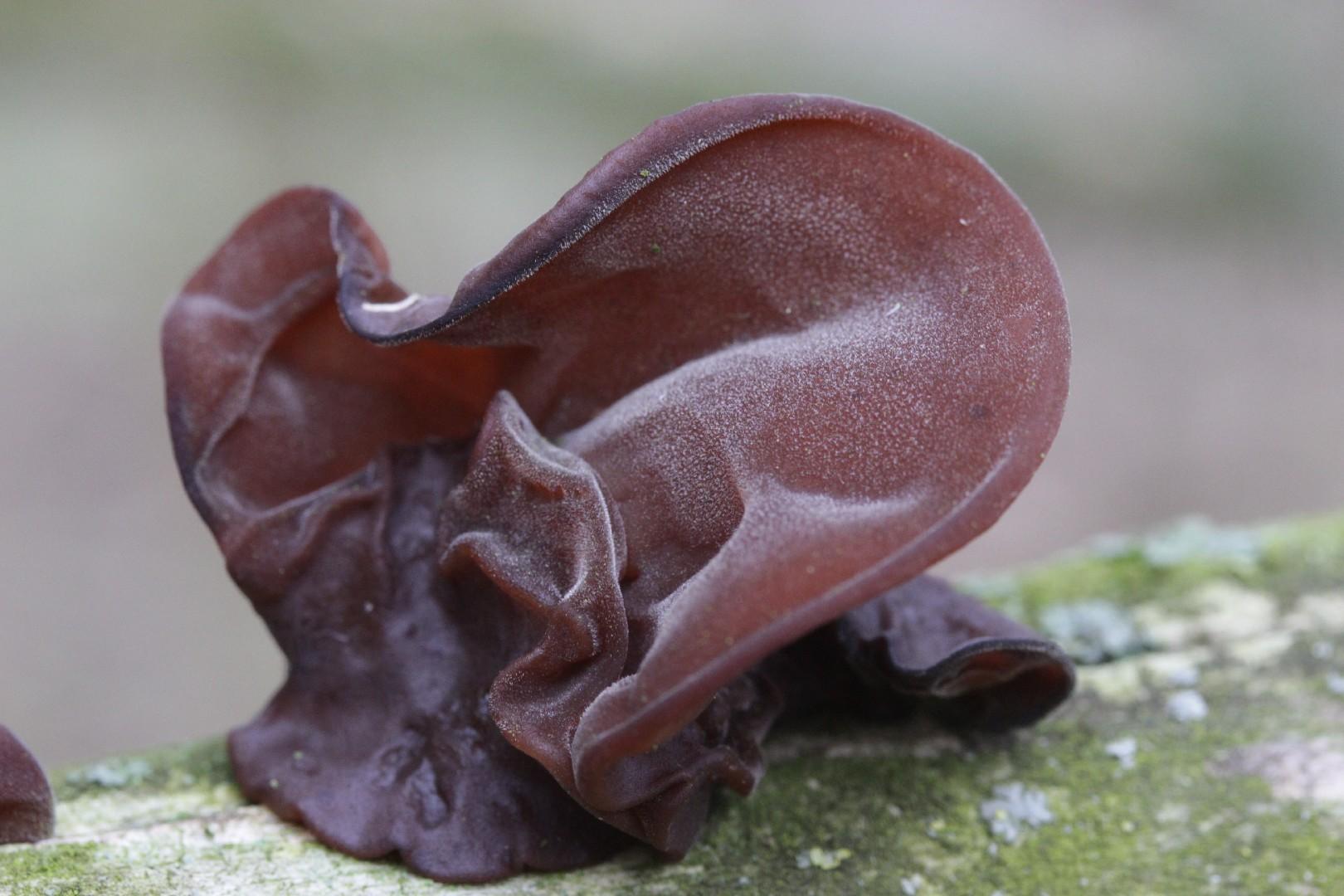

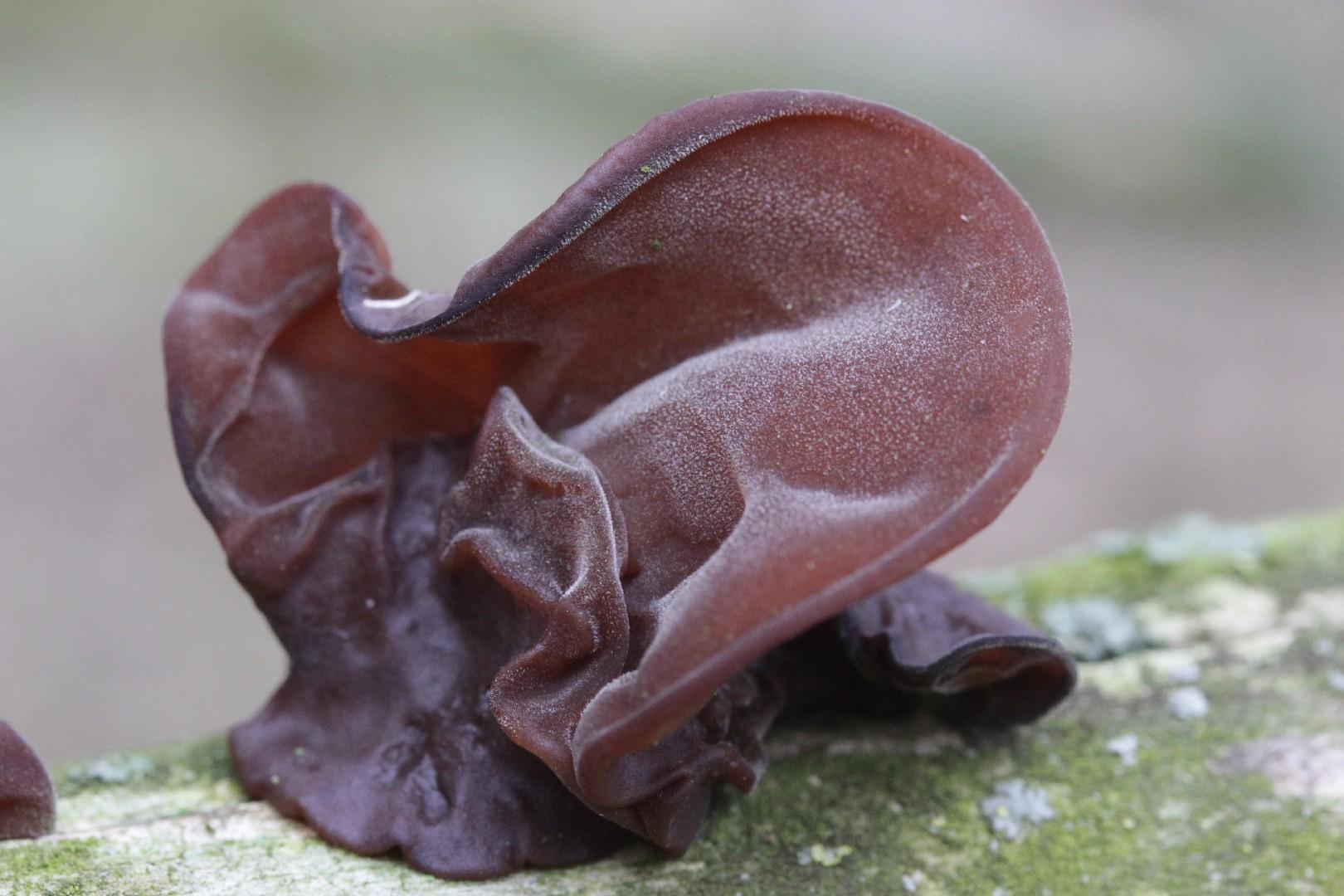
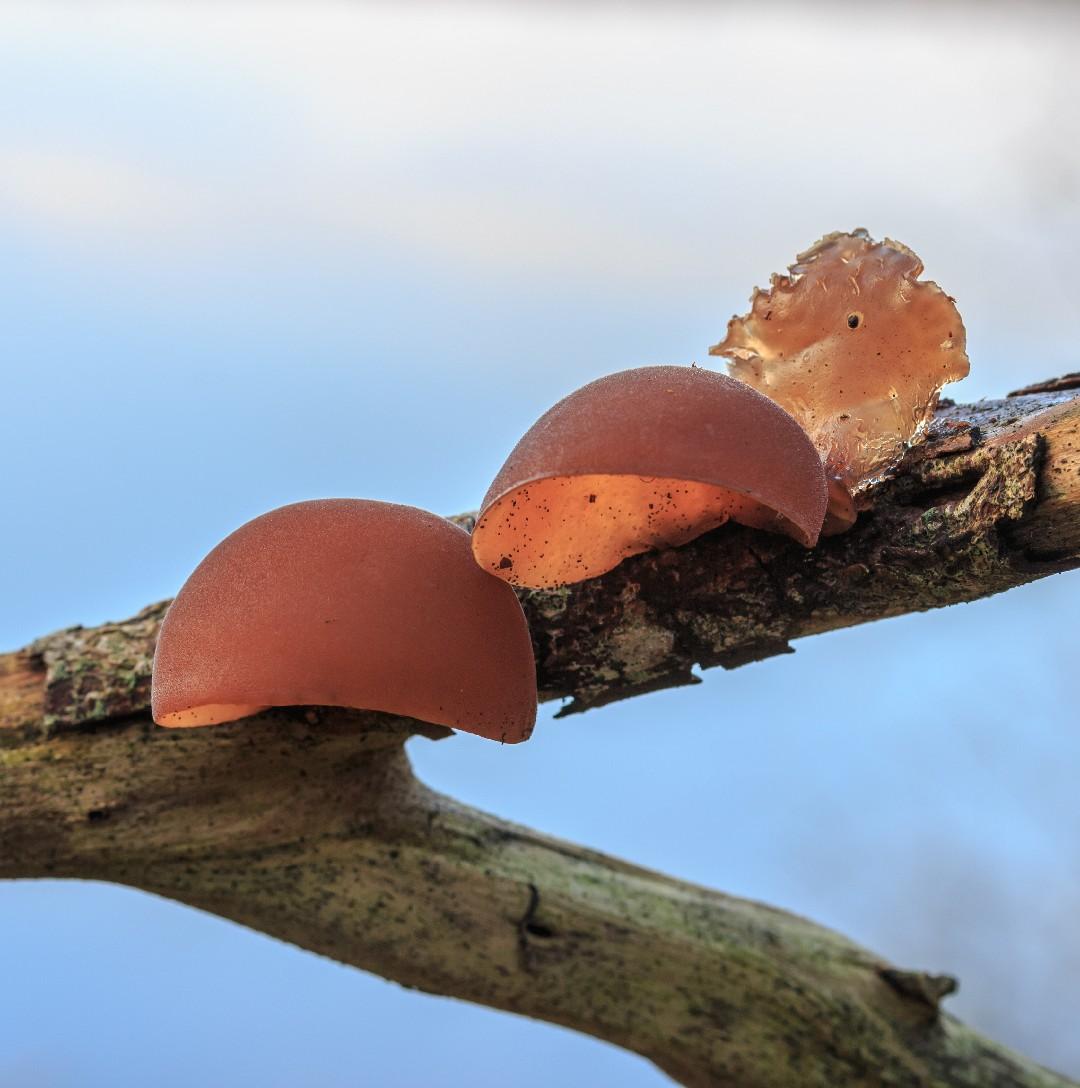
Jelly ear
Auricularia auricula-judae
A species of Auricularia. Also known as Tree ear, Black wood ear, Jew's ear, Yu ear, Mo-er.
Auricularia auricula-judae, or jelly ear fungus, thrives primarily during the colder months and springtime. It's most commonly found clinging to the decaying wood of elder trees, specifically their trunks and branches. This global species is a popular culinary ingredient, particularly in various Asian cuisines. Shoppers can typically find this distinctive ear-shaped, gelatinous mushroom readily available for purchase, either in its fresh or dried form.
Attributes of Jelly ear
Scientific Classification of Jelly ear
Toxicity and Edibility of Jelly ear
Is Jelly ear Toxic?
Toxicity information is not available for this mushroom. Always consult with an expert before consuming any wild mushrooms.
Is Jelly ear Toxic to Dogs?
Jelly ear can be dangerous to dogs. If your pet has consumed this mushroom, seek immediate veterinary attention. Symptoms may vary, but early intervention is crucial for the best outcome.
